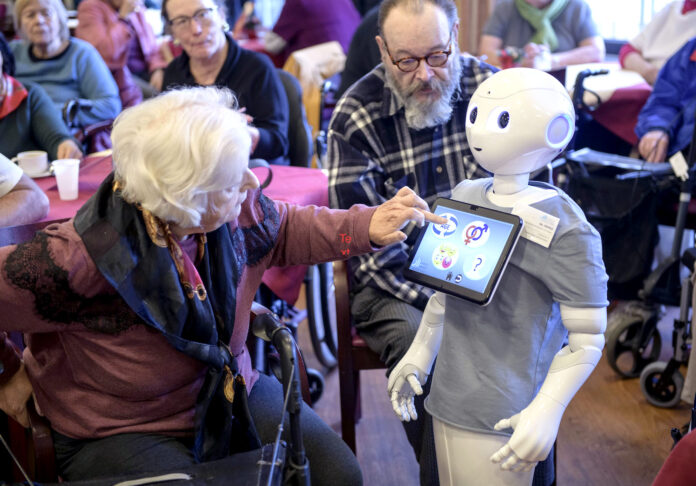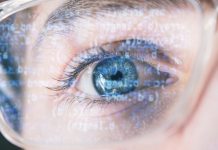
As the global population ages, ensuring the care and safety of older adults becomes increasingly important. Whether they decide to stay in their own homes with agencies that provide home care in Philadelphia, or they have to move to a facility, it is essential that safety is always at the forefront. Advances in modern technology offer innovative solutions that can significantly enhance the quality of life for the elderly, allowing them to live more independently and securely. From health monitoring devices to smart home systems, these technologies provide valuable support for both seniors and their caregivers. This article explores some of the most impactful modern technologies designed for the care and safety of older people, highlighting future trends in health monitoring and beyond.
Table of contents
Health Monitoring Devices for Modern Technologies
Health monitoring is a critical aspect of elderly care, enabling real-time tracking of vital signs and health conditions. With future trends pointing towards more sophisticated and integrated systems, health monitoring devices are becoming indispensable tools for maintaining the well-being of seniors. These devices can include wearable technology such as smartwatches and fitness trackers, which monitor heart rate, blood pressure, and activity levels, as well as more advanced medical devices that track glucose levels, oxygen saturation, and other critical health metrics.
Key Features of Health Monitoring Devices
- Real-Time Data Collection: Continuous monitoring of vital signs provides immediate feedback and alerts for any irregularities.
- Remote Monitoring: Caregivers and healthcare providers can access health data remotely, ensuring timely interventions.
- Emergency Alerts: Automatic notifications to emergency services or family members in case of a health crisis. Fall detection devices, for example.
- User-Friendly Interfaces: Devices designed for ease of use, with large displays and simple navigation.
Smart Home Modern Technologies
Smart home technologies play a crucial role in enhancing the safety and comfort of older adults, especially respite care. These modern technologies integrate various devices and systems within the home to create a safer living environment. Examples include smart lighting, which can automatically adjust based on the time of day or presence of individuals, and smart thermostats that maintain optimal temperatures. Additionally, voice-activated assistants such as Amazon Alexa or Google Home can help seniors manage their daily routines, set reminders for medications, and even contact emergency services. If you’re looking for respite care in Melbourne be sure to visit Oxa Care.
Benefits of Smart Home Technologies
- Increased Safety: Smart smoke detectors, carbon monoxide alarms, and security cameras ensure a safer home environment.
- Enhanced Accessibility: Voice-activated controls and automation simplify daily tasks for seniors with mobility issues.
- Energy Efficiency: Smart thermostats and lighting systems contribute to energy savings and reduce utility bills.
- Remote Management: Family members and caregivers can monitor and control home systems remotely, providing peace of mind.
Telehealth Services
Telehealth has revolutionized the way healthcare services are delivered, especially for older adults who may have difficulty visiting medical facilities. Telehealth services enable seniors to consult with healthcare professionals via video calls, reducing the need for in-person appointments. This technology is particularly beneficial for managing chronic conditions, post-surgical follow-ups, and mental health support.
Advantages of Telehealth Services
- Convenience: Access to medical consultations from the comfort of home.
- Reduced Exposure: Minimizes the risk of exposure to infectious diseases, particularly important during pandemics.
- Timely Care: Faster access to healthcare professionals, reducing wait times for appointments.
- Comprehensive Care: Integration with health monitoring devices for a more complete picture of a patient’s health.
Mobility Aids and Assistive Devices
Mobility aids and assistive devices are essential for helping older adults maintain their independence. These modern technologies range from simple aids like canes and walkers to more advanced solutions like electric wheelchairs and mobility scooters. Additionally, there are innovative devices such as stair lifts and automated door openers that further enhance mobility within the home. Our curved stairlifts from Kudos fit even the trickiest turns. These solutions are designed to blend seamlessly into your living space while providing reliable support for daily movement. If you’re interested in knowing more about home care package providers make sure you visit Let’s Get Care.
Types of Mobility Aids and Assistive Devices
- Canes and Walkers: Provide stability and support for walking.
- Electric Wheelchairs: Offer greater mobility and ease of use for those with limited physical strength.
- Mobility Scooters: Suitable for outdoor use, allowing seniors to travel further distances.
- Stair Lifts: Assist in safely navigating stairs, reducing the risk of falls.
- Automated Door Openers: Facilitate easier access to different areas of the home.
Wearable Safety Devices
Wearable safety devices are designed to provide an additional layer of security for older adults. These devices often include features such as GPS tracking, fall detection, and emergency call buttons. In the event of a fall or emergency, the device can automatically alert family members, emergency services or a dedicated care worker. Devices like this see a lot of use in assisted living communities, especially those offering memory care hanover ma (or indeed elsewhere) as a means of keeping residents with conditions like dementia safe. These devices can make it easier to know where they are if they decide to wander when in a confused state and also give their families peace of mind that in the event of an accident they’ll be given attention immediately.
Examples of Wearable Safety Devices
- Medical Alert Systems: Devices that allow seniors to call for help at the press of a button.
- GPS Tracking Watches: Enable family members and caregivers to locate the wearer in real-time, particularly useful for individuals with dementia or Alzheimer’s.
- Fall Detection Devices: Automatically detect falls and send alerts to emergency contacts.
- Smart Jewelry: Discreet and stylish, these items can include panic buttons and location tracking.
Future Trends in Elderly Care Technologies
The landscape of elderly care technologies is constantly evolving, with several promising trends on the horizon that could further enhance the care and safety of older adults. These include:
1. Artificial Intelligence and Machine Learning
AI and machine learning are poised to play a significant role in elderly care. These technologies can analyze vast amounts of health data to predict and identify potential health issues before they become serious. AI-powered virtual assistants can provide companionship, remind seniors to take their medication, and even help manage chronic conditions.
2. Robotics
Robotics is another area with vast potential. Robots designed to assist with daily tasks, such as fetching items, providing reminders, or even assisting with personal care, can greatly enhance the independence of older adults. In addition, robots can be used for companionship, helping to alleviate loneliness and social isolation.
3. Enhanced Telehealth Solutions
As telehealth continues to grow, we can expect more advanced and integrated solutions. Future telehealth platforms may offer more personalized care plans, integration with other health monitoring devices, and improved communication tools for both patients and healthcare providers.
4. Smart Home Integration
The integration of smart home modern technologies with health monitoring systems can create an even safer and more supportive environment for seniors. For example, a smart home system could detect if a senior has not moved for an extended period and send an alert to caregivers.
5. Biometric Monitoring
Advancements in biometric monitoring could lead to more accurate and comprehensive health tracking. Wearable devices that monitor a wide range of health metrics, from glucose levels to hydration status, can provide a more complete picture of a senior’s health.
6. Personalized Health and Wellness Programs
Using data from health monitoring devices, AI, and other technologies, personalized health and wellness programs can be developed for each individual. These programs can help seniors stay active, manage their health conditions, and improve their overall well-being.
Conclusion
Modern technologies are revolutionizing the care and safety of older adults, providing them with more independence, better health management, and improved quality of life. From health monitoring devices and smart home technologies to telehealth services and wearable safety devices, these advancements offer significant benefits for both seniors and their caregivers.
By staying informed about future trends in elderly care technologies, we can continue to develop and adopt innovative solutions that meet the evolving needs of our aging population. Embracing these technologies will not only enhance the lives of older adults but also support their families and caregivers in providing the best possible care.










